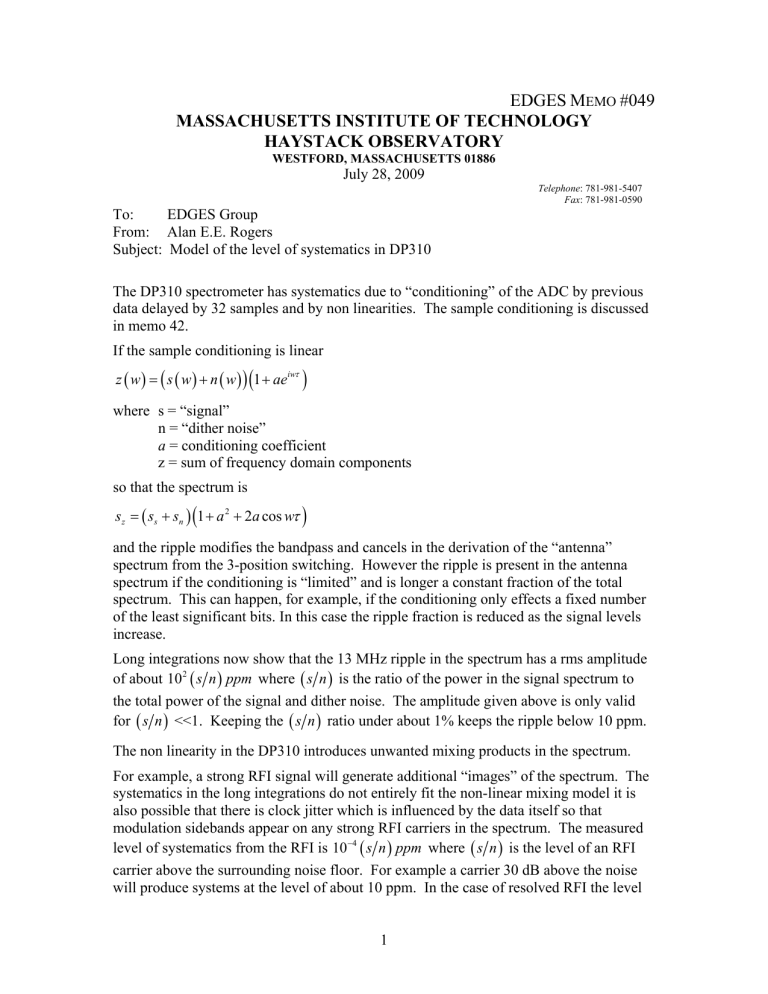EDGES M #049 MASSACHUSETTS INSTITUTE OF TECHNOLOGY

EDGES M EMO #049
MASSACHUSETTS INSTITUTE OF TECHNOLOGY
HAYSTACK OBSERVATORY
WESTFORD, MASSACHUSETTS 01886
July 28, 2009
To: EDGES Group
From: Alan E.E. Rogers
Subject: Model of the level of systematics in DP310
Telephone : 781-981-5407
Fax : 781-981-0590
The DP310 spectrometer has systematics due to “conditioning” of the ADC by previous data delayed by 32 samples and by non linearities. The sample conditioning is discussed in memo 42.
If the sample conditioning is linear
( ) =
( ( ) ( ) ) (
1
+ ae iw
τ
) where s = “signal” n = “dither noise” a = conditioning coefficient z = sum of frequency domain components so that the spectrum is s z
= ( s s
+ s n
) (
1
+ a
2 +
2 cos w
τ
) and the ripple modifies the bandpass and cancels in the derivation of the “antenna” spectrum from the 3-position switching. However the ripple is present in the antenna spectrum if the conditioning is “limited” and is longer a constant fraction of the total spectrum. This can happen, for example, if the conditioning only effects a fixed number of the least significant bits. In this case the ripple fraction is reduced as the signal levels increase.
Long integrations now show that the 13 MHz ripple in the spectrum has a rms amplitude of about 10
2
( )
where is the ratio of the power in the signal spectrum to the total power of the signal and dither noise. The amplitude given above is only valid for
( )
<<1. Keeping the ratio under about 1% keeps the ripple below 10 ppm.
The non linearity in the DP310 introduces unwanted mixing products in the spectrum.
For example, a strong RFI signal will generate additional “images” of the spectrum. The systematics in the long integrations do not entirely fit the non-linear mixing model it is also possible that there is clock jitter which is influenced by the data itself so that modulation sidebands appear on any strong RFI carriers in the spectrum. The measured level of systematics from the RFI is 10
−
4
( )
where is the level of an RFI carrier above the surrounding noise floor. For example a carrier 30 dB above the noise will produce systems at the level of about 10 ppm. In the case of resolved RFI the level
1
of systematics are given by 10
2
( )
where divided by the total power in the signal spectrum.
is the total power in the RFI
In summary in order to keep systematics at a level of about 10 ppm the signal power should be only about 1-2 percent of the out of band dither noise power. In addition, any periods for which the power in the RFI exceeds the total sky noise power from the antenna should be excised from the integration.
2



